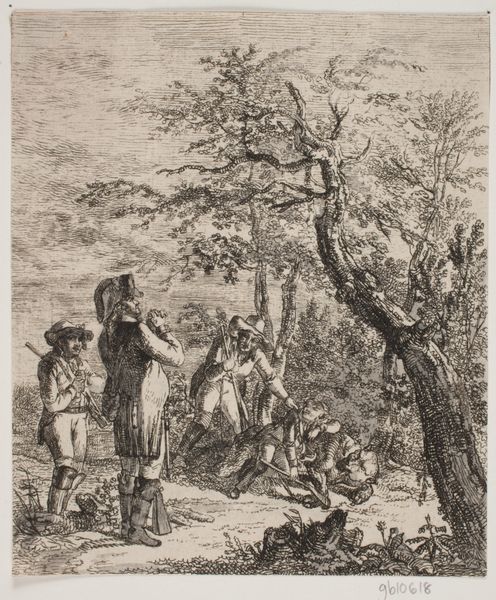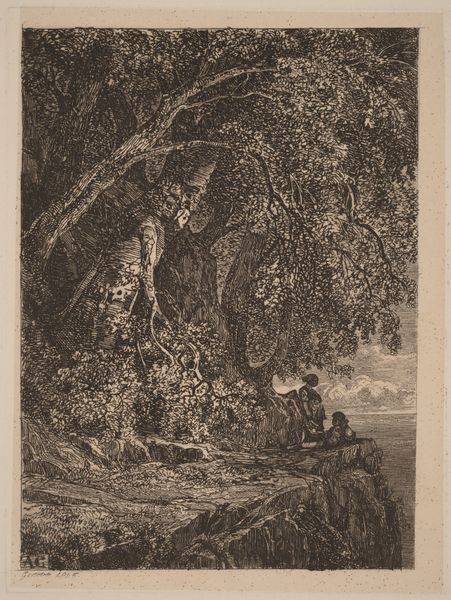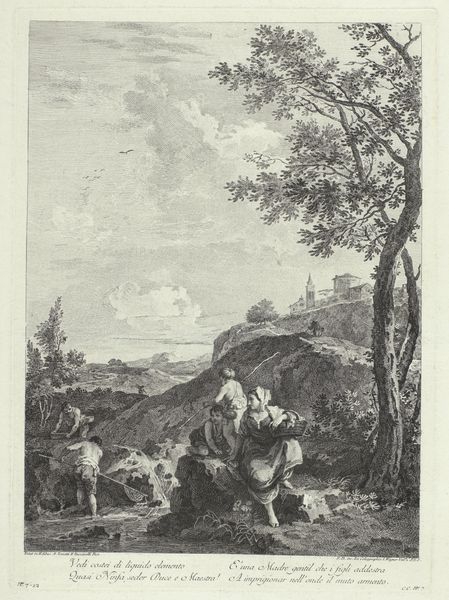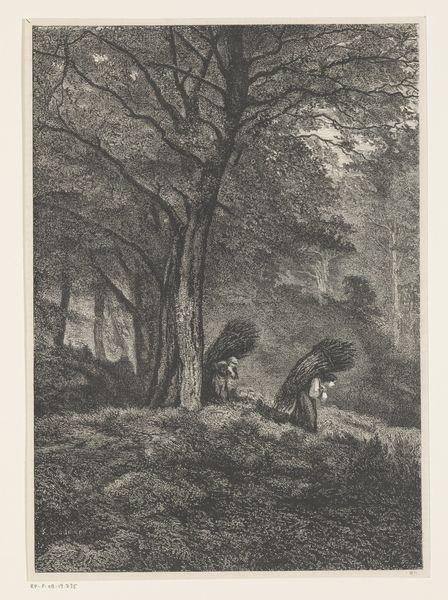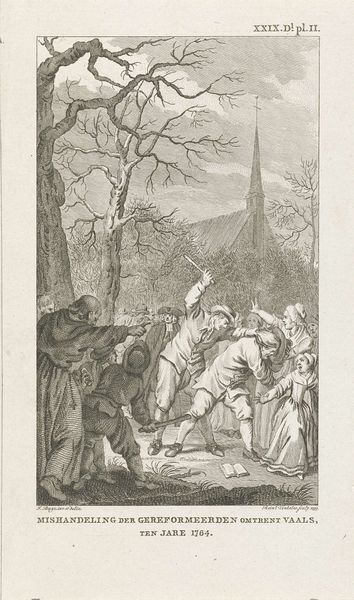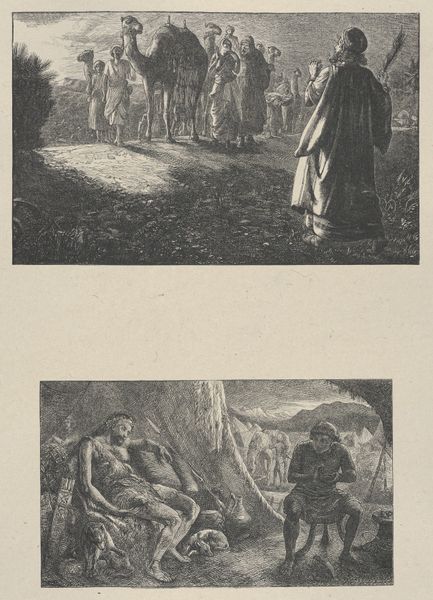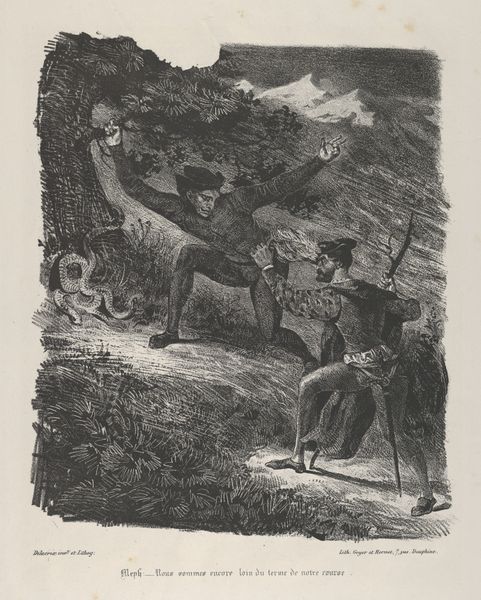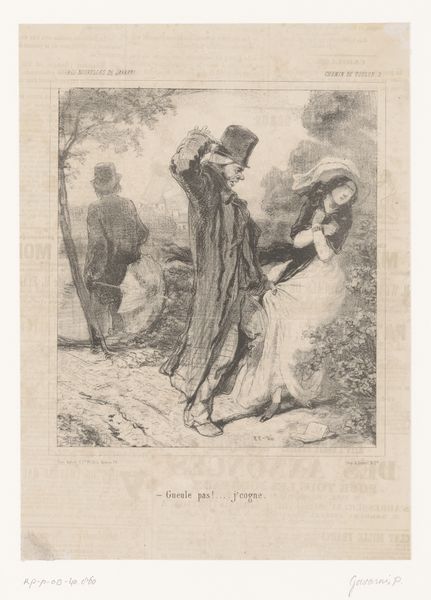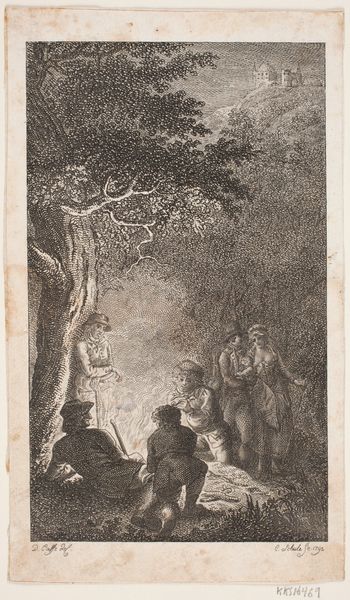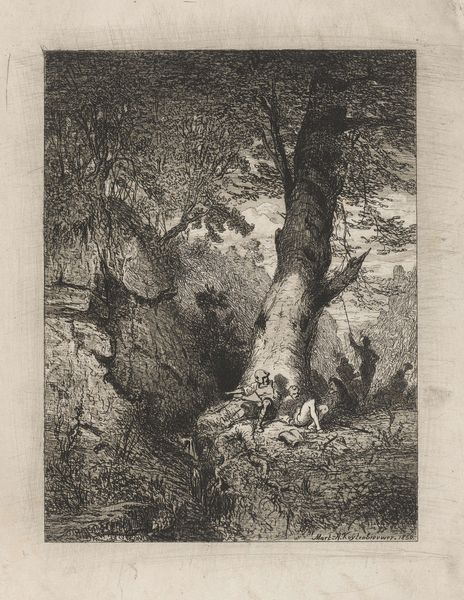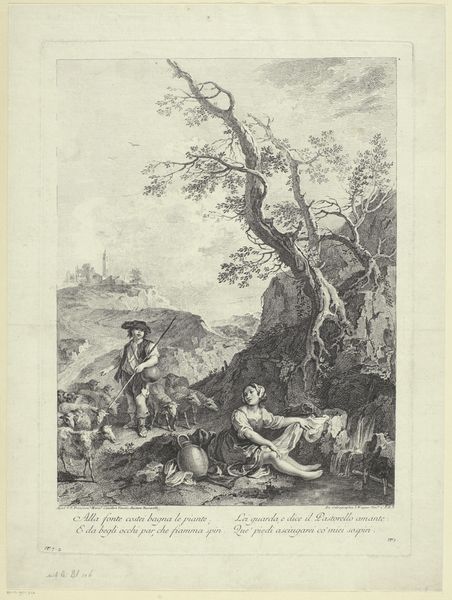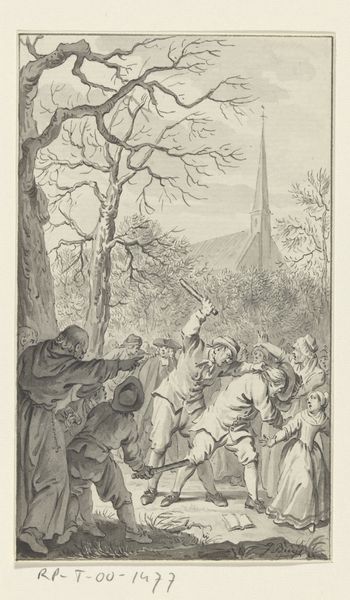
print, etching
#
narrative-art
#
dutch-golden-age
# print
#
etching
#
landscape
#
figuration
#
romanticism
#
genre-painting
Dimensions: height 205 mm, width 155 mm
Copyright: Rijks Museum: Open Domain
Editor: So this is "Hagenpreek van de Hugenoten", or "Field Sermon of the Huguenots," from 1850. It's a print by Charles Billoin, and the museum's listed the medium as etching. It’s got this clandestine, almost fearful mood about it, seeing this group gathered in secret. How do you interpret this work, especially given its historical context and the material choices Billoin made? Curator: Considering it’s an etching, the relative ease of production allowed for wider circulation of this imagery. Etchings like these, reproduced in multiple editions, acted as a form of visual propaganda, embedding and shaping ideas about religious identity and oppression for mass consumption. What social and political climate would lead Billoin to recreate the scene of this forbidden Protestant gathering from centuries past? Editor: That's fascinating – visual propaganda, distributed so widely! Given it’s dated 1850, a period of revolution across Europe, it's easy to imagine people then identified with the Huguenots fight against religious oppression and state power. But why use this particular historical episode, rather than depicting say contemporary events, considering those dangers may still be relevant in the artist's current context? Curator: Perhaps, by locating the event in the past, he avoids direct censorship, yet the work speaks to the continuous struggles faced by those challenging authority. And notice how the landscape itself acts as a kind of raw material – the ground provides shelter for the sermon, emphasizing the groundedness of religious feeling but also the precarity of dissent. Do you agree that this depiction helps transform everyday acts into a political statement? Editor: I do! Framing it as part of this ongoing struggle makes it feel less like a specific historical event and more like a universal experience of resistance. Thanks, this perspective makes so much sense. Curator: It’s interesting to see how revisiting past techniques such as etching helps engage the audience with materials charged with history, and makes that resistance tangible.
Comments
No comments
Be the first to comment and join the conversation on the ultimate creative platform.
